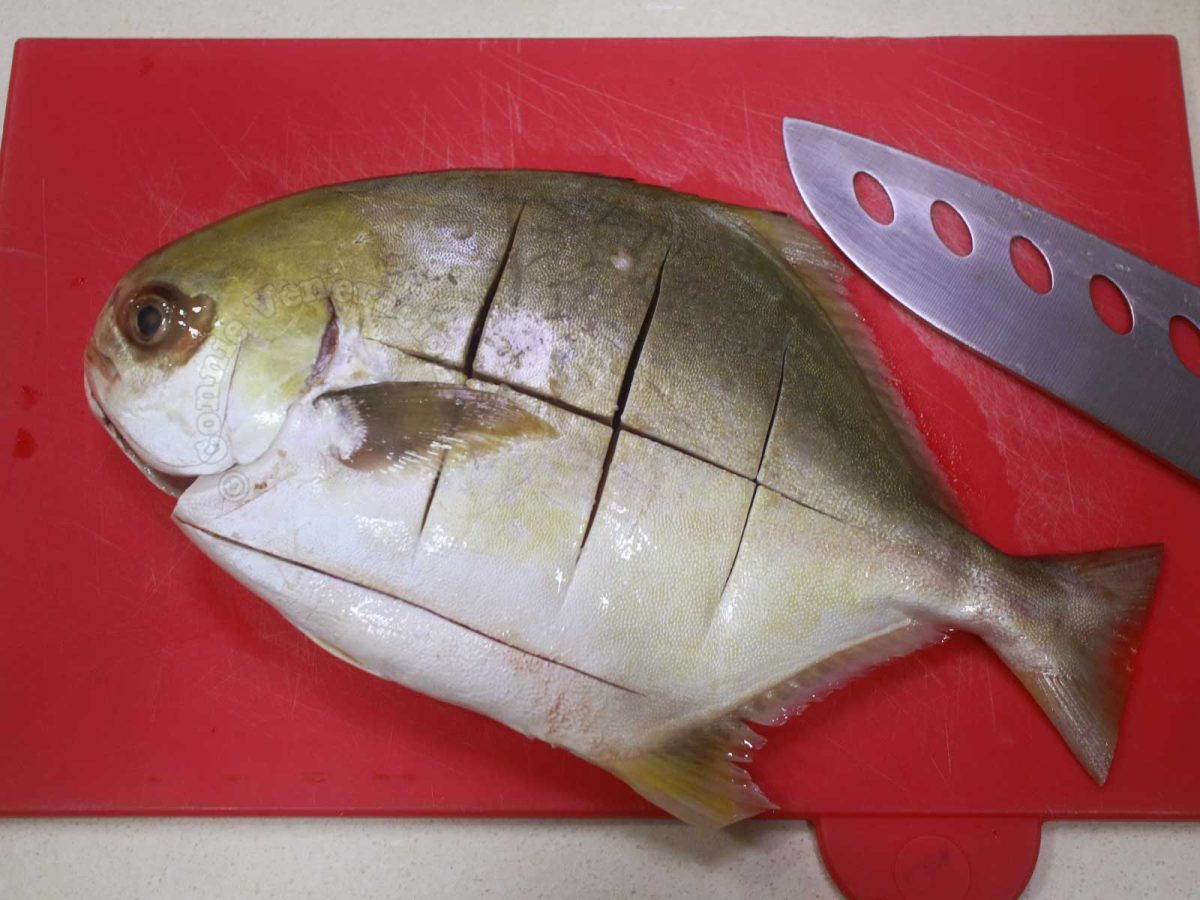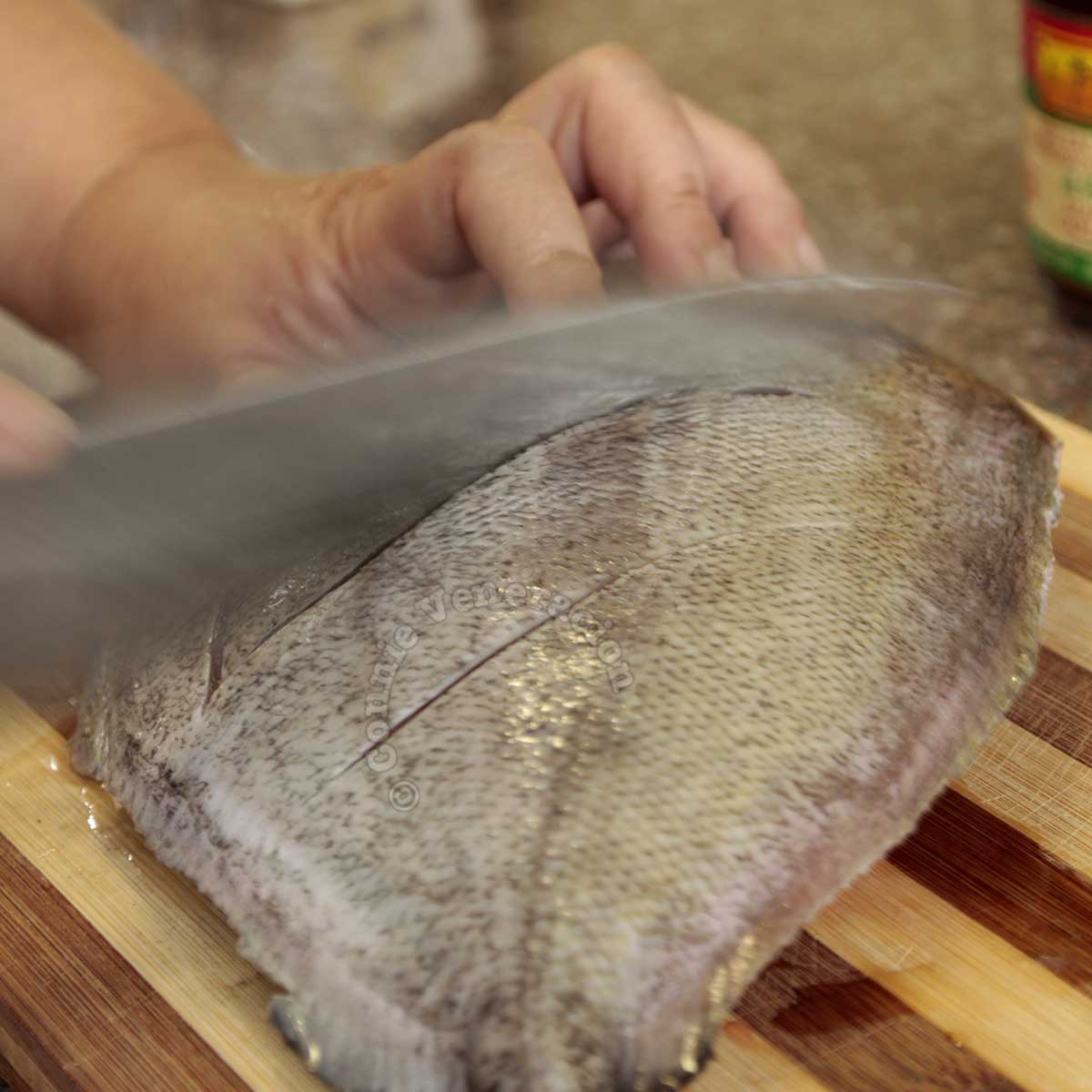Scoring the fish means slashing across the thickest part of the flesh. With small fish, one slash is usually enough. But for larger fish, you’ll need to make more.
The most common way is to make diagonal slash or slashes. There is no rule though that says you can’t do it differently.

Another technique is make a vertical slash from the head down to the tail then make two to or more horizontal slashes that intersect with the vertical slash.
Some cooks make slashes so deep that they reach the bone. I don’t. For me, the ideal depth is midway between the skin and the bone — just enough to open up the flesh to catch the seasoning and for the heat to get through the flesh more efficiently.
In which direction the slashes go doesn’t really matter so long as you address the three purposes for scoring the fish.
1 – Score whole fish for even seasoning
Unlike fish steaks and fillets which you can cut into even thickness, a whole fish, even the flattish ones, will be thicker down the middle and thinner at the sides.
Scoring the fish enables you to allow the seasoning to reach deep into the thickest parts of the flesh.
2 – Score whole fish for even cooking
The uneven thickness of the flesh of a whole fish means the thinner portions will cook faster than the thick middle. Scoring the fish allows it to cook evenly.
3 – Score whole fish to create steam vents
Try frying or steaming a whole fish without scoring it first AND SEE if it doesn’t burst. Why would it do that?
Water. Fish flesh contains water. When water gets hot, where does it go? Up, right? It becomes steam. When water from the fish flesh pushes upward, the flesh will burst open.
Scoring the fish creates steam vents to allow the water to escape without forcing the flesh to allow it to do so.
So, there. If you think that scoring the fish is just additional work, it isn’t.




